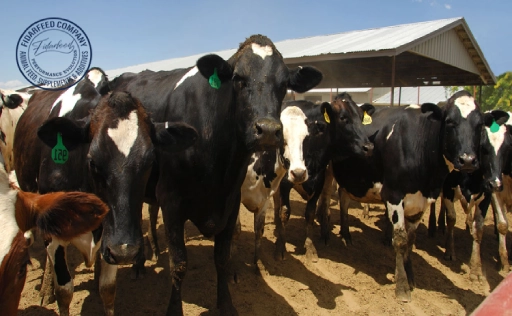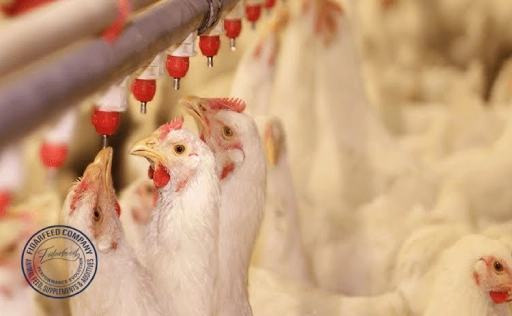
Jersey Cows & milk quality go hand in hand. For dairy farmers, animal nutritionists, and feed suppliers, understanding the role of this beloved breed in producing premium milk is essential. Whether you’re a seasoned breeder or just starting out in the dairy industry, you’ve probably heard that Jersey cows produce some of the best milk in the world. But what exactly sets their milk apart? And how can you ensure your herd delivers top-quality yields? Let’s dive into a practical and insightful guide that explains the “why” and “how” behind Jersey cows and their exceptional milk.
Why Jersey Cows Are a Top Choice for Milk Quality
Jersey cows have long been favored for their efficiency, gentleness, and high-value milk. Their smaller size means they consume less feed than larger breeds like Holsteins, yet they often deliver milk with significantly higher butterfat and protein content. This makes Jersey milk not just richer but also more profitable.
Learn more about: Smart Shopping: The Probiotic Online Buyer’s Guide for Animal Feed Supplements
Farmers often report that Jersey cows are easier to manage, especially for smaller operations. Their calm temperament and adaptability to different climates make them an excellent choice for beginners and experts alike.
What Makes Jersey Milk Different? Understanding Its Nutritional Superiority
Jersey milk isn’t just good — it’s nutritionally superior. On average, it contains about 18-20% more protein and 25% more butterfat than milk from other dairy breeds. These qualities are highly valued in cheese and butter production.
Learn more about: Improving Milk Production with Probiotics: Focus on Rumen Health
A 2019 study from the Journal of Dairy Science found that consumers prefer the taste and creaminess of Jersey milk, making it ideal for premium dairy products. High beta-casein A2 levels, often found in Jersey herds, also mean easier digestion for many people, adding another layer of appeal.
The Science Behind Jersey Cows & Milk Quality
So, what’s happening on a biological level? Genetics play a huge role. Jersey cows have been selectively bred over generations for milk composition, not just volume. Their mammary systems are incredibly efficient, converting feed into rich, dense milk.
Learn more about: How to Spot Reliable Animal Feed Manufacturers
Moreover, their microbiome—the community of bacteria in their digestive systems—helps break down fibrous plant material more effectively, supporting both health and productivity. Feeding trials and genetic studies continue to confirm that Jerseys consistently outperform many other breeds when it comes to milk quality.
Comparing Jersey Cows to Other Dairy Breeds: Which is Best for Your Farm?
While Holsteins produce more milk in terms of volume, Jersey milk wins in quality. If your goal is quantity, Holsteins might seem like the go-to. But if you’re producing cheese, butter, or premium dairy, the higher fat and protein content of Jersey milk makes it more profitable.
Learn more about: Essential Guide to Efficient Livestock Waste Management
A small to mid-sized farm focused on direct-to-consumer or specialty markets will often benefit more from Jerseys. Their feed efficiency also means lower overhead, especially when feed prices rise.

Boosting Milk Quality: Feeding Tips for Jersey Cow Health
You can’t get high-quality milk without healthy cows. Start with a balanced diet rich in energy, fiber, and essential minerals. Jerseys are particularly responsive to high-quality forages like alfalfa hay and pasture grass, supplemented with corn silage or whole grains.
Learn more about: Finding a Trusted Animal Feed Supplier: Your Ultimate Guide
Probiotic supplements, flaxseed for omega-3 enrichment, and adequate clean water are also vital. Mineral balance—especially calcium and phosphorus—helps prevent metabolic issues like milk fever.
Consulting with an animal nutritionist to tailor feed rations can lead to significant gains in both milk yield and quality.
Milking Techniques That Improve Quality and Yield
How you milk your cows matters as much as what you feed them. Use clean, well-maintained equipment and follow consistent routines to reduce stress. Jersey cows respond well to gentle handling and regular schedules.
Learn more about: Creating the Perfect Habitat for Breeding Pet Birds
Pre-milking udder sanitation, proper milking machine settings, and post-milking teat disinfection all play a role in maintaining milk hygiene.
Common Health Issues That Can Affect Jersey Cows & Milk Quality
Even the best cows can run into health issues. Jerseys are more prone to milk fever due to their higher calcium demands. Mastitis is another big concern, as it directly impacts milk quality.
Learn more about: Protect Your Aquatic Life with Probiotics
Routine herd health checks, vaccination programs, and quick response to any signs of illness are your best defense. Lameness, reproductive disorders, and heat stress can also impact milk composition.
Investing in preventive care pays off. A healthy cow produces high-quality milk consistently — it’s that simple.
The Economic Benefits of Producing High-Quality Jersey Milk
Premium milk brings premium prices. Many processors offer incentives for higher butterfat and protein levels, which means Jerseys can earn more per liter even with lower volume output.
Learn more about: Want a Healthy Pet Bird? Try Probiotics
Direct-to-consumer businesses, such as farm shops or artisan dairies, often market Jersey milk as a luxury product. This opens up niche revenue streams that are less affected by volatile commodity markets.
Reducing feed costs while improving milk value makes Jerseys a smart long-term investment.
Record Keeping and Testing: Tracking Your Jersey Cows’ Milk Quality
You can’t improve what you don’t measure. Regular milk testing for components like fat, protein, lactose, and SCC helps you monitor herd performance and identify issues early.
Learn more about: Choosing the Right Horse Breed for Breeding: A Comprehensive Guide
Digital tools and mobile apps make tracking easier than ever. Keep tabs on daily yield, reproduction cycles, feed intake, and vet visits. Over time, these records can reveal trends that help optimize your operation.
Testing also ensures compliance with industry standards, which can protect your reputation and keep your milk marketable.
Tips for New Dairy Farmers Raising Jersey Cows
Starting with Jerseys? Great choice. Focus on building a solid relationship with your local vet and feed supplier. Learn the signs of common health problems and stay ahead with a preventative mindset.
Start small and scale as you gain experience. Jerseys are forgiving and adaptable, making them ideal for small farms or first-time owners.
Visit other farms, join dairy associations, and never stop learning — the more informed you are, the more successful you’ll be.
Future of Jersey Cows & Milk Quality in Sustainable Dairy Farming
Sustainability is the future, and Jersey cows are ready for it. Their lower methane output per kilogram of milk solids and superior feed efficiency make them a smart choice for eco-conscious operations.
Learn more about: How Proper Lighting Improves Egg Quality and Production in Layer Hens
Breeding programs now prioritize both productivity and environmental impact, aligning with global efforts to reduce the carbon footprint of agriculture.
As consumers become more selective, demand for high-quality, sustainably-produced milk will only grow — and Jerseys are perfectly positioned to meet it.
Conclusion
Jersey cows & milk quality are inseparable when it comes to producing nutritious, profitable, and sustainable dairy. From their impressive butterfat content to their gentle nature and economic value, Jersey cows offer benefits that both new and experienced farmers can appreciate.
Whether you’re expanding your herd, improving your feed program, or just starting out, investing in Jersey cows can set your farm on the path to long-term success.
Have thoughts or questions? We’d love to hear from you! Drop a comment below, share your experience, or ask anything related to Jersey cows and milk production. Your insights help keep our community strong and growing.







